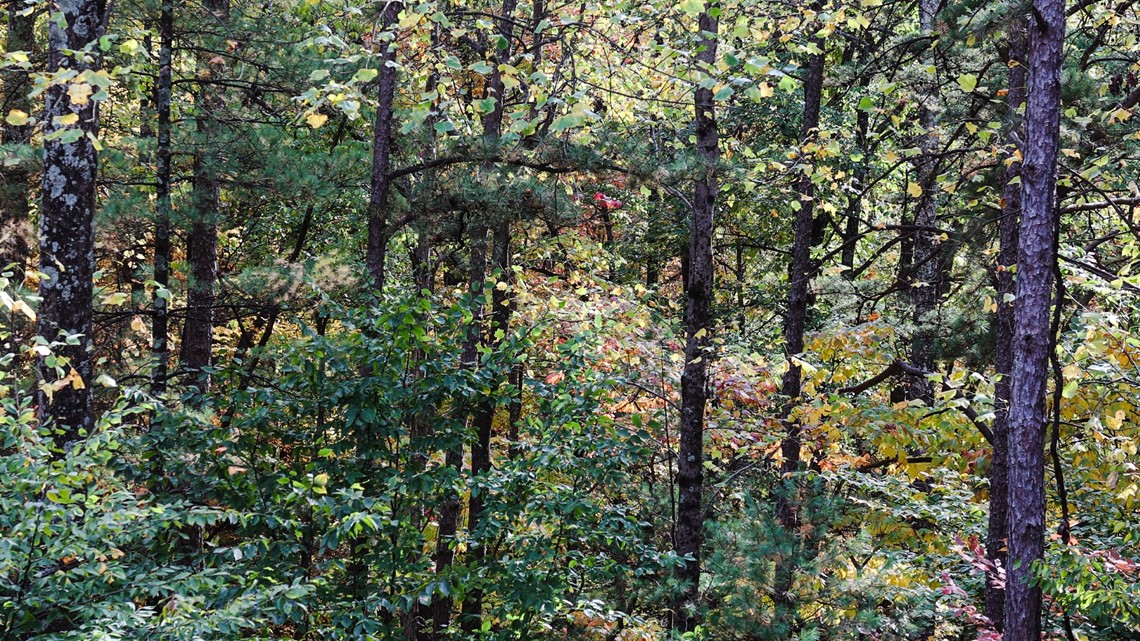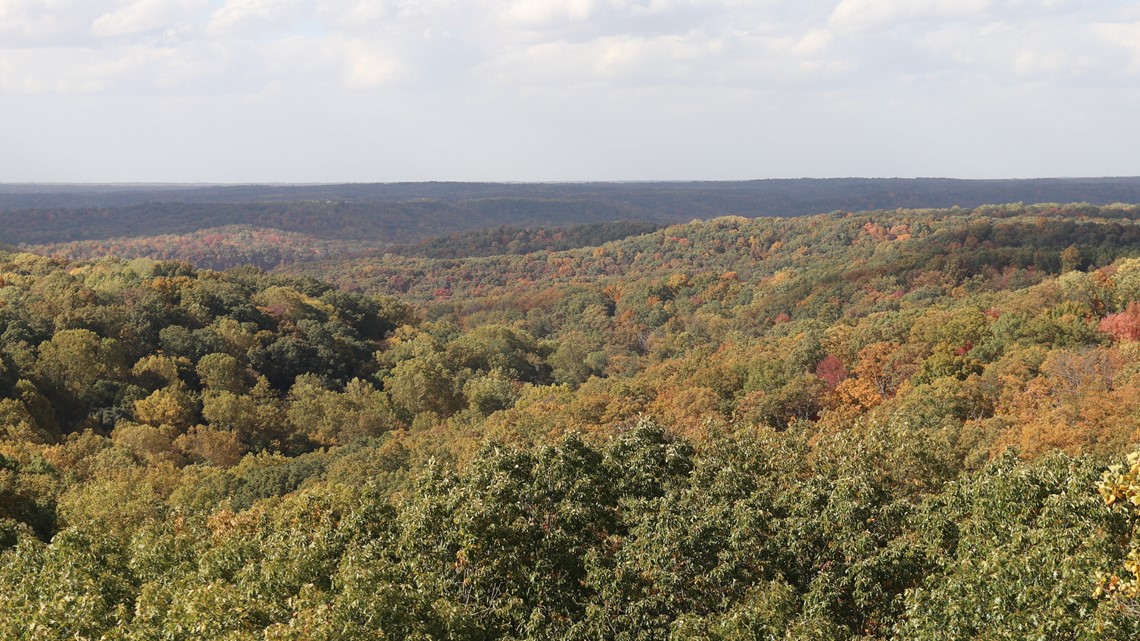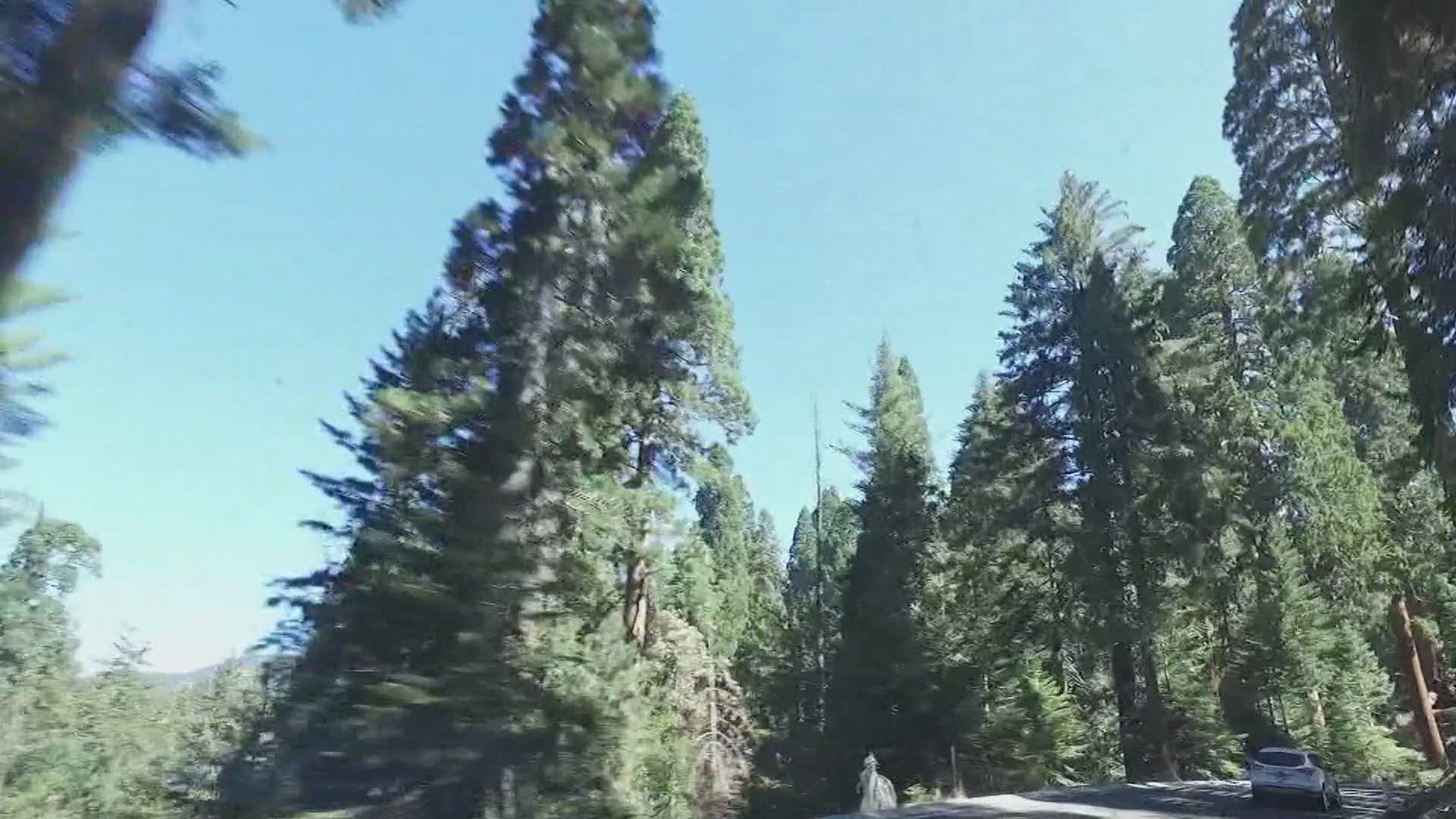INDIANA, USA — Millions of ancient trees could see enhanced protections under a plan amendment proposal put through by President Joe Biden that seeks to ban certain logging practices in groves of old-growth forests throughout the country.
The proposed amendment, announced on Tuesday, is part of an effort to conserve old-growth forest nationwide to mitigate the impacts of climate change, and calls for updates to the land management plans for each of the 128 forests managed by the U.S. Forest Service.
Forest land management plans stipulate how the 193 million acres national forest will be handled. Never before have specific considerations been given to old-growth forest, and that traditionally meant land management plans could call for swaths of old-growth forests to be logged for timber. Biden's proposed policy specifically indicates lands cannot be managed with the primary intention of logging for economic reasons.
"Ecologically appropriate" logging, such as those done in dry forest types, would still be permitted.
Former Forest Service senior policymaker Chris Wood oversaw the implementation of the 2001 Roadless Rule, which established prohibitions on road construction and timber harvesting on some 58.5 million acres of inventoried roadless areas inside the National Forest Park System. Now the president and CEO for Trout Unlimited, a nonprofit dedicated to the preservation of freshwater systems nationwide, he said it.
“It's a pretty big deal. You can criticize it on the margins. But, they're basically saying that for old-growth forests, they want to protect them,” Wood said.
Old-growth and mature forests absorb carbon dioxide equivalent to more than 10% of our nation’s annual greenhouse gas emissions, and have been called critical tools by scientists and researchers to assist in safeguarding humankind from the worst impacts of a warming world. They also provide critical habitat for a range of species - in 2017 a study published in the journal Nature found species from intact landscapes like old growth forests were disproportionately affected by continued habitat loss.
Wood said it bodes well for the restoration of the nation’s old-growth forests that the Forest Service is being called upon to follow through on strategies that prioritize their conservation, making plans that consider the preservation of the country’s oldest trees.
“The benefits these trees can provide in terms of habitat for fish and wildlife, helping to shade and create thermal cover on streams. Helping to suck up carbon, they far outweigh whatever benefits they would have being cut into two-by-fours,” Wood said.
Results released from the initial inventory report revealed the Forest Service manages nearly 25 million acres of old-growth forest, and more than 68 million acres of mature forests, on national forests and grasslands.
“The most durable protections are laws. When Congress passes a law like The Wilderness Act, that is incredibly durable. The second most durable protection protections are regulatory in nature,” Wood said. "I have to say in this day and age, it would have to be quite the knuckle-dragger of an administration to wanna say that we're not gonna protect old growth forests."


In addition to plan amendment proposals being considered for 128 national forest management plans, a letter sent to regional forest managers on Tuesday instructed any forest management activities currently planned for old-growth stands to be reviewed and approved before moving forward.
“Effective immediately, any projects proposing vegetation management activities that will occur where old growth forest conditions, based on regional old-growth definitions, exist on National Forest System lands shall be submitted to the National Forest System Deputy Chief for review and approval,” wrote Christopher B. French, who is the the deputy chief of the National Forest System.
How to best protect and restore old-growth trees inside national forests has been at the crux of a deep divide that has formed between the Forest Service in Indiana, and advocates and communities living near the state's only national forest: The Hoosier National Forest.
The Houston South Vegetation Management and Restoration Project was slated to be based in a northwest corner of Jackson County, Indiana inside Hoosier National Forest, and proposed to burn as much as 15,000 acres of forest and also apply herbicide to more than 2,100 acres near Lake Monroe over the next 10 to 15 years.
The Forest Service maintained the project was necessary to maintain the health of the forest and to restore oak-hickory ecosystems, while environmentalist organizations and advocacy groups argued the project would increase sediment runoff and ruin drinking water for at least 120,000 people.
That project was stalled following a preliminary injunction issued by a judge last March.
Forest advocates also voiced opposition to the proposed Buffalo Springs Restoration Project slated for Orange County. That project proposed to log more than 5,000 acres of trees inside Hoosier National Forest lay down 19 miles of road construction, and turn eight of 13 miles of horse trail into gravel log road. Community members and forest advocates argued the project would harm wildlife, destroy old-growth trees and pollute nearby drinking water, while the Forest Service argued the project was necessary to preserve the health of the forest.


The Forest Service did not comment on how the new proposal from the Forest Service would impact either of those projects, but advocates with the Indiana Forest Alliance said they were pleased with the Biden administration’s proposal.
Indiana Forest Alliance Executive Director Jeff Stant said he wished more focus would have been given to the mature trees, not just old-growth, inside national forests. He said many trees inside Hoosier National Forest are mature enough that they almost count as old-growth in a few decades.
Removing them, he said, would undo a century of restoration and erase ongoing carbon sequestration now happening in the forest.
“Do you see how absurd it would be to have a revision of the Hoosier National Forest Management Plan, and protect the 2,000 acres of old growth forest that the Forest Service acknowledges exist in the Hoosier. But then say: we're not gonna do anything else?” Stant said.
He added: “Carbon sequestration doesn't just start at 100 and 50 years. It is something that occurs in greater amounts as the forest ages. The 1% of trees across our forests that are the largest are sequestering more than half of all the carbon that is sequestered by the forest. So, the object has got to be to let mature forests and their large trees continue to grow older and store more and more carbon.”
Any finalized language protecting banning logging projects on old-growth forests would not be officially included into land management plans until the Forest Service has completed an Environmental Impact Assessment, which is expected to be completed in 2025.
Biden’s proposed policy also makes updates to The Northwest Forest Plan, which creates management plans for Washington, Oregon and northwestern California. Those forests contain roughly one-quarter of the remaining old growth in The National Forest Park System. That plan had not been updated since 2007.
Because the proposal comes as part of an executive order, it's implementation is dependent on the outcome of the 2024 election. If Biden remains in office, it could be implemented by 2025.

